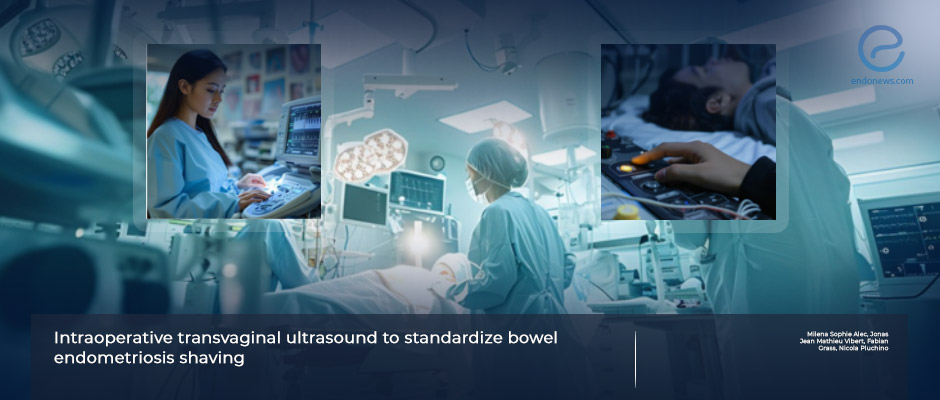Intraoperative Transvaginal Ultrasound-Guided Resection of Bowel Endometriosis
Sep 27, 2024
Intraoperative transvaginal ultrasound assists in measuring residual nodules after rectal shaving to reduce the risk of recurrence.
Key Points
Importance:
- Intraoperative transvaginal ultrasound following bowel endometriosis shaving is a safe and effective method that shows promise in reducing recurrences.
Highlights:
- THis methd delivers precise measurements of residual nodules, helping to distinguish between persistent, recurrent, and new lesions during follow-up.
What's done here:
- Dr. Alec from Switzerland used intraoperative transvaginal ultrasound to check for residual rectal nodules in 2 patients after rectal shaving for endometriosis.
- The surgical team recorded the procedure on video to highlight the importance of assessing whether additional bowel resection is needed.
Key Results:
- Intraoperative transvaginal ultrasound was performed on 2 nulliparous young women with severe endometriosis.
- Both patients experienced primary infertility, severe dysmenorrhea, dyspareunia, and dyschezia, with a desire for pregnancy.
- The first patient was 35 years old and had not undergone hormonal therapy; the second was 27 and had received one year of dienogest treatment.
- Preoperative ultrasound images showed the location and thickness of rectal nodules.
- A multidisciplinary team, including a gynecologist and a rectal surgeon, reviewed the ultrasound results and decided on rectal shaving.
- After the procedure, intraoperative ultrasound revealed residual endometriotic lesions, which were subsequently removed.
Lay Summary
Alec et al. from the Department of Obstetrics and Gynecology at Geneva University Hospitals aimed to show how to manage rectal endometriosis using ultrasound in a narrative video. The main goal of their procedure was to check the rectal wall for any remaining disease after bowel shaving and to decide if more bowel resection was necessary.
The study featured two patients diagnosed with severe rectal endometriosis. Both women experienced severe pain during their periods, pain during intercourse, and difficulty with bowel movements, all while wanting to become pregnant. Neither had any previous abdominal surgeries.
Before the surgery, ultrasound scans revealed that the endometriosis had invaded the rectal wall. After a discussion among a team of specialists, the surgery began with bowel shaving. During the operation, another ultrasound was performed to check for any remaining nodules after filling the pelvic area with saline solution.
This approach allows for accurate detection of the thickness and depth of any leftover endometriosis in the rectal wall. If bowel shaving alone is sufficient, this will be noted for the patient’s care.
The authors highlighted that intraoperative transvaginal ultrasound is a reliable, accurate, and noninvasive method for assessing the bowel wall after shaving. This technique helps determine whether further bowel resection is needed and distinguishes any residual nodules, which can prevent recurrence.
This study was recently published in Fertility and Sterility.
Research Source: https://pubmed.ncbi.nlm.nih.gov/39098537/
discoid resection bowel shaving transvaginal ultrasonography intraoperative ultrasound rectal endometriosis.

